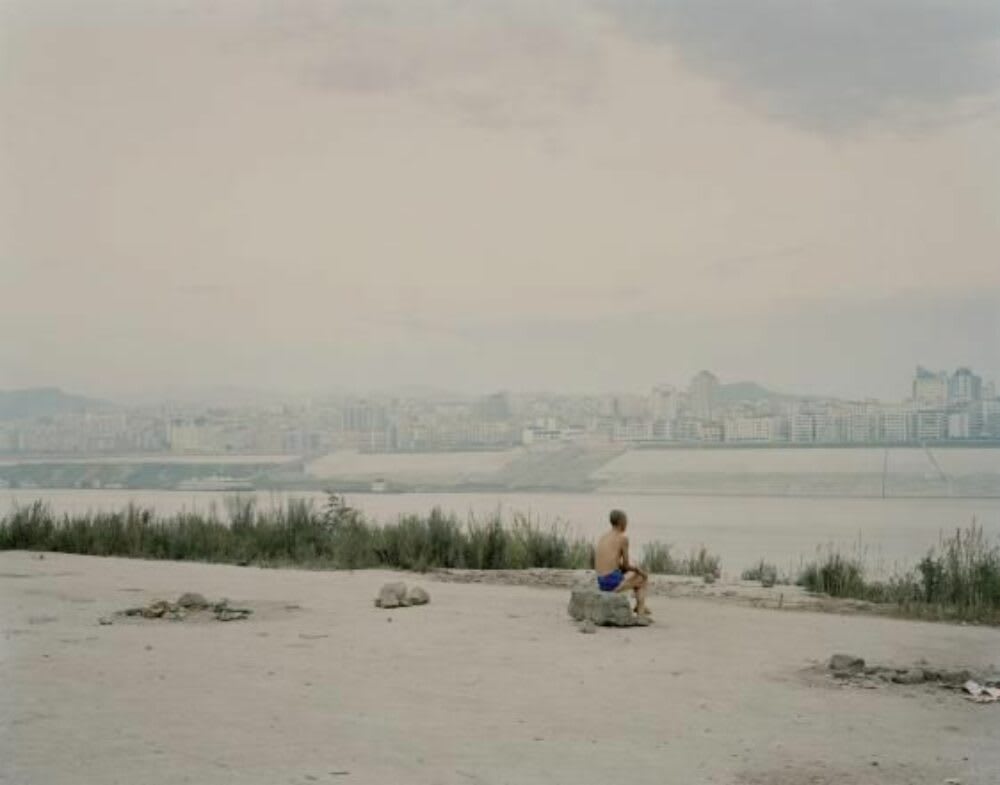Nadav Kander review in Photograph magazine
"The significance to China, both economically and spiritually, of the Yangtze River cannot be overstated. Some 10,000 ships leave and enter the nearly 4,000-mile-long river every day, and one out of every 18 people on the earth lives along the banks of the river. But the flooding of the river following the completion of the Three Gorges Dam project, 1.8 million people were displaced from their homes.
Muted yellow or gray tones characterize all of the photographs on view, a result of the ever-present pollution, but also the fog along the river. This painterly palette, and the small human figures set against a massive landscape, bring to mind 19th century Romantic landscape paintings. But the religious and spiritual themes of those paintings - the Sublime, and man's insignificance against God and nature - are replaced by a sense of man's powerlessness against the forces of economic and industrial development.
The elderly man in Old Fengdu II (Looking at New Fengdu), 2006, is one such figure: he sits alone on a rock, looking across the river to the other side, where a city has risen up in five short years. It's called New Feng Du, because Old Feng Du, his home, has been razed to make way for the flooding engineered by the Three Gorges Dam project.
Yangtze: The Long River won the Prix Pictet in 2009, an award that focuses on photography and sustainability (Luc Delahaye is this year's winner). But Kander comes at those issues sideways, through such exquisitely composed photographs as Yibin I (Bathers), Sichuan Province, 2007. A group of swimmers has gathered at the foot of an enormous outcropping of rock, in a formal composition that suggests Thomas Eakins's Swimming Hole. But instead of the idyllic commune with nature, Kander offers us a dark, foreboding river with a smokestack emitting a thin grey line of smoke, and the uncertain bathers, who seem to be contemplating the wisdom of entering those waters.
Kander's photographs are "about" China and environmental concerns, but they're also about photography, about color and composition, and about the inter-relatedness of China and the West."
By Jean Dykstra
